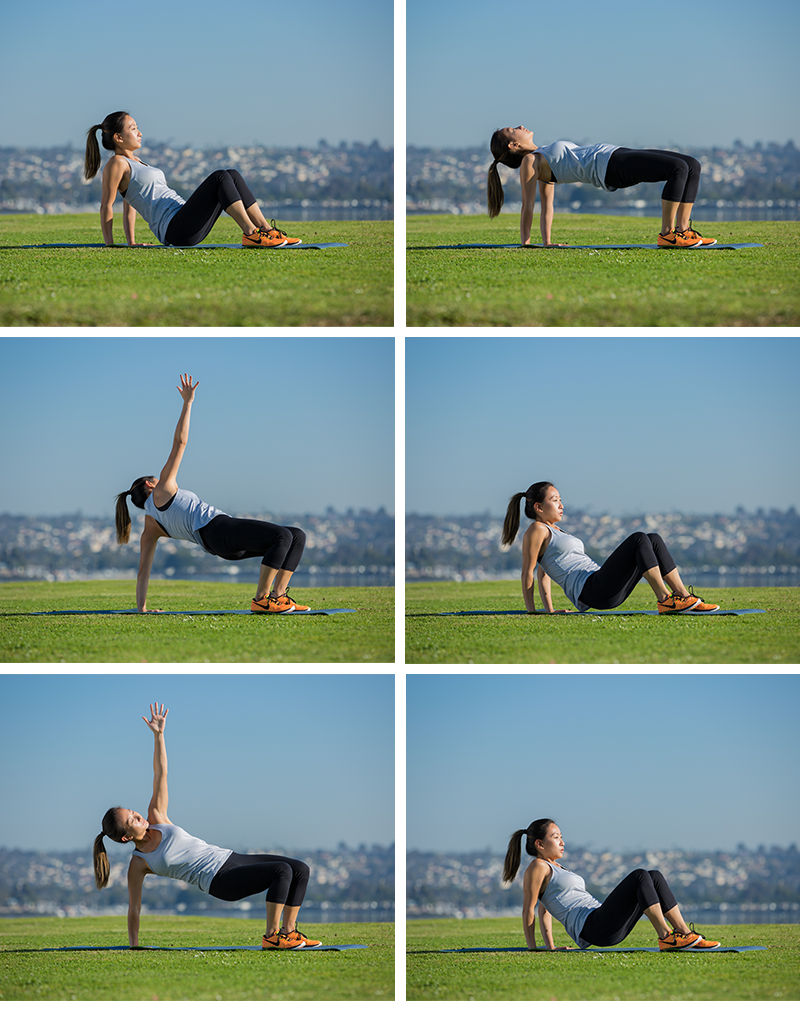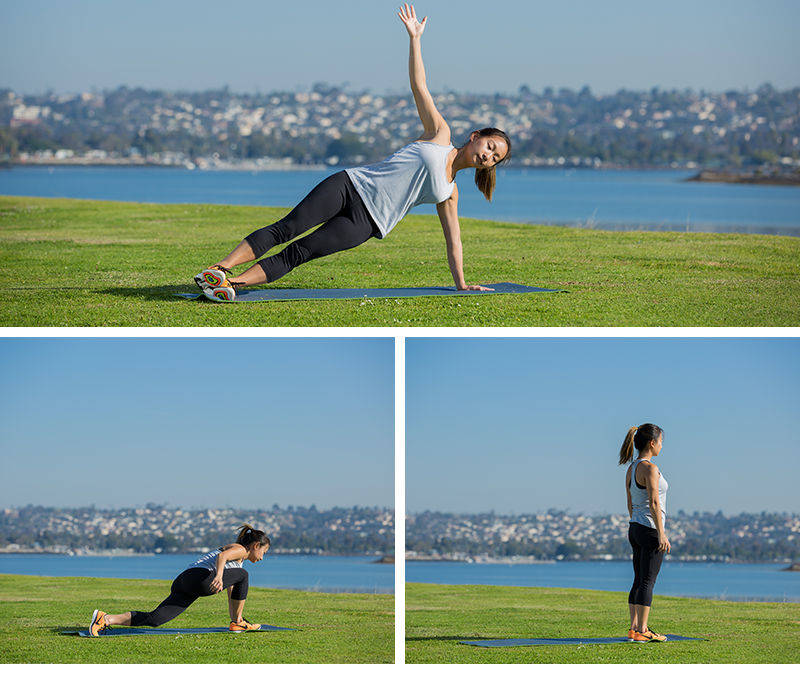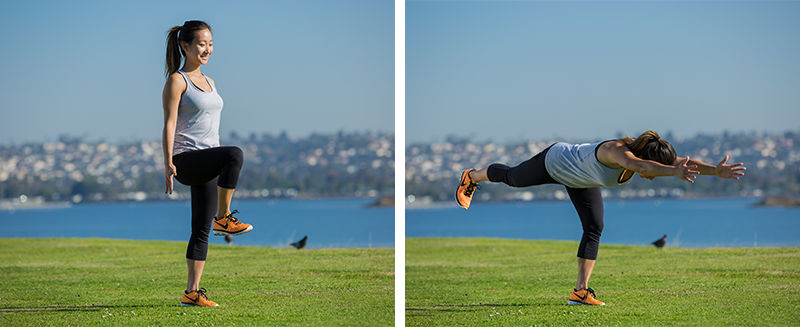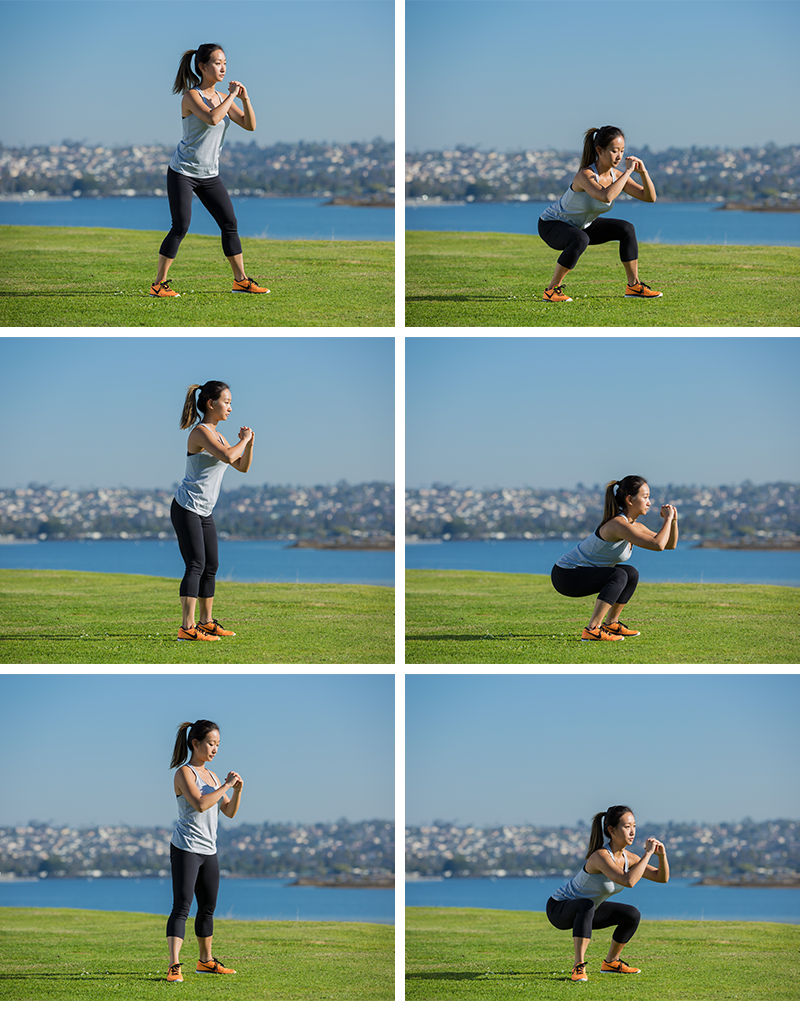If asked, most of your clients would agree that there are a lot of options for body-weight exercises. And they would most likely be able to rattle off a list of the usual ones: squats, lunges, push-ups, planks, glute bridges and maybe a few others.
And just as likely, that list of moves will seem a bit dull and uninteresting, and may result in some missed workouts instead of spending some time doing something valuable.
Sometimes a client is travelling or has no time for a trip to the studio or gym and needs an effective, engaging body-weight workout.
We can argue that people shouldn’t need novelty with exercise. And while it is true that people would be well served by doing that list of familiar exercises rather than nothing, the human brain is wired to find novelty more interesting.
We can stubbornly swim against the current and insist that people just do it—or we can exhibit true fitness leadership and provide clients with continually challenging workouts while still following sound principles of movement-based training.
In the spirit of novelty, and using the ACE Integrated Fitness TrainingTM (ACE IFTTM) model as a guide, here are five creative body-weight exercises for when your clients need an equipment-free workout, whether they are traveling or at home.
The ACE IFT model features five movements:
- Bend and lift—a bilateral hip or quad-dominant movement (e.g., squat, deadlift, glute bridge)
- Lunge—a unilateral or asymmetrical lower-body movement (e.g., single-leg squat, lunge)
- Push—a vertical or horizontal pushing movement, either bilateral or unilateral
- Pull—a vertical or horizontal pulling movement, either bilateral or unilateral
- Rotation
|
|
Exercises |
Movement(s) |
|
1 |
Bend and lift; pull; rotation (if doing single-arm option) |
|
|
2 |
Rotation; lunge; push |
|
|
3 |
Lunge |
|
|
4 |
Rotation; push; lunge (due to single-leg landings) |
|
|
5 |
Bend and lift |
Table -top Bridge

This version of the hip bridge introduces a significant upper-body element with a pull into shoulder extension. This exercise also features rotation if the single-arm reach option as shown in the video is added.
Side Plank Get-up

This exercise is demonstrated on hands, but it can be performed on elbows as well. While the elbow variation may be easier on the arm, it is more challenging on the core and legs, because it requires more torso lift, hip flexibility and leg strength to move the leg into the correct position to get up.
Single-leg Flextension

“Flextension” is a term I use to describe flexion and extension when used together. This slower movement integrates balance and coordination with strength. If necessary, a client can gently tap the toes of the moving leg to help with stability. It is better to do the movement well with a little balance help then to barely do it by refusing to tap the foot lightly.
Mountain Skater

If you combine a Mountain Climber with a Skater Hop, you have Mountain Skater! Ensure the feet stay wide and try to get a little hang time. I often see the feet work their way back together during a set, because this is the more familiar position for a Mountain Climber. When we are challenged, moving quickly and getting fatigued, we often fall back to default movement patterns.
Dancing Squat
The usual foot position for the squat when performed as an exercise is symmetrical. Yet in life, we rarely squat symmetrically. Consider your foot position when getting up from a chair, the toilet or out of a car—your feet are often in two different positions. Here we are using that reality to create an exercise. At the top of each rep, one foot moves forward, backward, in or out, or rotates to a new position so that each squat is different than the one before. This version is great for adding some internal and external hip rotation, abduction/adduction, and flexion or extension to the body-weight squat.
Finally, note the different speeds used in these movements: normal, fast and slow (fast and slow are simply relative to whatever “normal” speed would be for any individual). Life moves at different speeds and so should your training.
How to Use These Exercises
If a single movement stands out to you, work it into your clients’ programs. You can also use the exercises listed in the order shown to create a circuit of either timed sets (25-second sets is a starting point for most people), or reps (10 each; 20 for movements 4 and 5.) The best part is that a circuit of all five movements performed nonstop for five to 10 minutes would provide a surprising and beneficial challenge for a small investment of time.
Wrap-up
When there are endless options for body-weight exercise, people will often do nothing. When the human brain is presented with too much choice and too many options, our response is often to not make a choice at all. These five moves offer you some wonderful options for delivering what people want from you—effective and engaging exercise.




 by
by 







 by
by